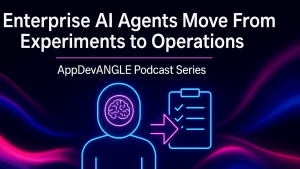Snapshot
IBM turned in a solid first quarter, beating consensus on revenue, margins, and free cash flow despite the expected hangover from a late-cycle mainframe market. Software was once again the bright spot—up 9% in constant currency and now representing 44% of total revenue. IBM’s Infrastructure revenue declined 4% as IBM Z entered the late stage of its product cycle – this despite strong growth in storage. IBM’s $2 billion FCF was strong and helps fund its continued M&A strategy (it closed its $6.4B Hashicorp purchase this past quarter).
With the z17 mainframe slated for general availability mid-year and Red Hat bookings growing at a high-teens clip, management is guiding to 5%+ revenue growth at constant currency for FY 25. If z17 demand materializes and HashiCorp cross-sell kicks in, IBM could exit 2025 with a meaningfully higher growth rate—something the market has not assigned to IBM in a decade.
Despite the strong print, the stock is off in after hours. In this note we summarize our key takeaways from IBM’s earnings and look forward to the rest of the year.
Key Takeaways
| Theme | Evidence | Why It Matters |
|---|---|---|
| Software Growth | Software revenue +9 % yr/yr CC; ARR $21.7 B (+11 %); segment margin 29 % (+370 bps). | Red Hat, Automation, and Data are growing double digits and carry gross margins 20 points above Infrastructure. More software = more leverage. |
| Mainframe Late Cycle → Trough Before Peak | IBM Z revenue –14 %; Infrastructure profit margin slips to 8.6 %. Storage strong. | z17’s AI-in-silicon and new security features should re-accelerate revenue in 2H 25, pulling services and software along for the ride. |
| AI Infrastructure Pivot | Management spotlighted AI workloads in both z17 and distributed Power/Storage roadmaps—a tone shift from prior calls. | Indicates IBM sees infrastructure demand re-emerging as the AI build-out widens beyond hyperscalers; positions IBM to monetize silicon, software, and services bundles. |
| Cash & M&A | Cash + marketable securities $17.6 B, up $2.8 B q/q; HashiCorp closed for $7.1 B. | IBM can keep buying growth and hybrid-cloud tooling without stressing the balance sheet (core debt is under control in our view. |
| Macro & Public-Sector Risk | Consulting signings –9 %; U.S. federal pipeline flagged as challenging due to budget uncertainty and Doge. | A prolonged spending slowdown from government agencies could hurt IBM’s services recovery even as product cycles improve. |
Reading the Quarter
1. Software: Red Hat Momentum Continues
- Hybrid Cloud (i.e. Red Hat) grew 13 % in CC, with bookings in the high teens and the six-month backlog up mid-teens.
- Automation (now includes Hashi) accelerated to 15 %+ in CC, reflecting early demand for integrated DevOps + infrastructure-as-code pipelines.
- Software segment profit rose 23%—significant margin expansion of 3.7 percentage points (370 basis points)—underscoring the structural benefit of software, recurring revenue and product mix.
Our view: Red Hat remains a linchpin of IBM’s value thesis. The open-source halo coupled with premium support pricing delivers both growth and margins. Hashi positions IBM to lead in multi-cloud management with Terraform orchestration capabilities enterprises need to operationalize IT workflows across heterogeneous estates.
2. Infrastructure: Waiting for the z17 Re-Boot
Infrastructure revenue declined 4 percent, dragged down by IBM Z (–14 %). Distributed systems fell a modest 4 percent, cushioned by storage strength.
The recent z17 announcement, features on-chip inferencing, a cyber-resilient memory architecture, and simplified DevOps tooling. We see two implications, including:
- Cycle Reset: Mainframe customers typically refresh every two to three years; shipments accelerate six months post-launch. Expect Infrastructure to flip positive in Q4 and into 2026.
- AI Angle: Embedding multi-model inferencing directly into the processor fabric positions z17 as a transactional AI engine—valuable for banks, insurers, and governments running mission-critical workloads that cannot leave the data center.
3. Consulting: Macro Headwinds Require Margin Discipline
Consulting revenue was flat, but profit jumped 32 percent as IBM pulled levers on utilization and workforce mix. Signings of $4.9 billion fell 9%, with management citing changing client priorities especially in public sector. Consulting head Mohamad Ali has indicated that AI could dampen revenue growth but at the same time accelerate profitability. It appears that trend is kicking in.
Our research suggests IBM will lean on AI-led productivity to maintain margins, but top-line acceleration likely waits for macro clarity and the z17 upgrade wave that historically spurs services pull-through.
4. Cash Flow & Balance Sheet Support M&A
- Free cash flow $2.0 B; net cash from operations ex-Financing flat yr/yr despite higher capex.
- IBM issued $7 B of debt to fund the HashiCorp acquisition but ended the quarter with $17.6B in cash, which leaves plenty of room for tuck-in acquisitions.
IBM guided $13.5B in full year FCF. This means IBM can pay its dividend (~$6 B annually), service its debt (despite interest rate heights), and still maintain an M&A budget north of $4B without incremental debt. We see this as especially important if macro softness persists.
The Bull Case for IBM
- AI Infrastructure Surge. If enterprise AI workloads accelerate on-prem, IBM’s Z, Power and storage lines could grow mid-single digits, adding growth to total revenue.
- HashiCorp Cross-Sell. Early bundling of Vault/Terraform with Red Hat OpenShift could raise Automation growth into the mid-to-high teens, driving another point of margin expansion.
- Government AI Spending. A bipartisan push for national AI security infrastructure could reopen the federal spigot despite broader fiscal tightening and Doge concerns.
- Continued Strong Software Performance. IBM’s continued acceleration of its software portfolio to build a more durable, sustainable, higher growth business centers around its software portfolio and recurring revenue. This combined with Red Hat should power its software business.
The Bear Case
- Mainframe Reliance. Any slippage in z17 GA or muted customer budgets could weigh on Infrastructure for the full year, challenging IBM’s 5 percent growth target.
- Macro & Policy Uncertainty. The Trump administration’s haphazard tariff agenda and ad-hoc budget priorities create planning friction, particularly in Europe and U.S. public sector.
- Integration Risk. HashiCorp is a high-growth, culture-rich asset; integration missteps could slow developer adoption and erode the acquisition’s expected 2 pointcontribution to Automation growth.
- Continued Headwinds to Consulting. Federal spending challenges (including Doge) and AI will likely continue to eat into consulting revenue. As labor shifts from humans to machines it will become increasingly difficult for people-led businesses to grow.
On balance we see the Bull Case as more likely as banks will procure the z17 sight unseen. Policy uncertainty affects IBM but not necessarily in an inordinate way relative to other firms. In our view, IBM has its mojo back with respect to M&A and is executing well on integrations. While Consulting may continue to face revenue headwinds due to AI, margins should improve as IBM automates its services business and drives AI throughout its massive portfolio. Moreover, IBM is being conservative in our view with respect to its expectations for Consulting.
theCUBE Research Bottom Line
In our opinion, IBM just posted a beat and build quarter. It beat the numbers, built the narrative for a steady second half and is holding its guidance for the full year. The following three legs are relevant. :
- Red Hat + HashiCorp to drive durable, high-margin software growth.
- Mainframe & Distributed Infrastructure tuned for AI to re-energize hardware and pull consulting along.
- Targeted M&A to fill portfolio gaps and widen open-source ecosystem moats.
If management executes—shipping z17 on time, converting HashiCorp demand, and exploiting the on-prem AI tailwind—IBM could exit 2025 growing mid-single digits with 30 percent-plus software margins and >$14 billion in FCF. That profile would warrant a multiple re-rating closer to large-cap software peers than legacy IT conglomerates.
Despite the earnings beat and these factors, investors are taking IBM stock down about 6% as of this print. Likely this reflects profit taking after a strong day. Analysts on the call questioned IBM especially hard on spending in the federal sector, a slight deceleration in Red Hat and assumptions in Consulting. Nonetheless, IBM’s CFO Jim Kavanaugh stressed IBM’s excitement with Red Hat and a seventh consecutive quarter of strong bookings – with a continued shift to subscriptions. Red Hat OpenShift up 23% is another bright spot with virtualization, hybrid cloud and Ansible up strong as well. We like the Red Hat story frankly.
For investors and enterprise buyers, the message is clear: watch the z17 adoption curve and Red Hat ARR. Those two metrics will reveal whether IBM’s hybrid-cloud-plus-AI thesis is turning from story to reality. In addition, the weakening dollar would suggests to us that IBM’s free cash flow guide is probably conservative. However IBM hedges about 30 currencies roughly 12 months in advance and so the impact of translating foreign currencies into more depreciated dollars may be somewhat muted. Moreover, IBM is at 15% of its FCF target through Q1 and there’s no reason to be aggressive in an uncertain environment.



